- Introduction
- What Are Floating Hoses?
- Role of Floating Hoses in Dredging Operations
- Benefits of Floating Hoses in Marine Fluid Transfer
- Design Features That Improve Efficiency
- Applications Across Industries
- Maintenance and Durability Considerations
- Selecting the Right Floating Hose System
- Future Trends in Floating Hose Technology
- Conclusion
Introduction
Dredging and marine fluid transfer operations are vital for maintaining navigable waterways, supporting offshore infrastructure, and extracting underwater resources. From clearing sediment in ports to moving slurry, oil, or water over long distances, these activities rely heavily on durable and efficient systems. However, working in marine environments introduces a range of operational challenges, such as wave motion, shifting seabeds, and exposure to corrosive saltwater, that can compromise traditional rigid piping.
A floating hose presents a more efficient and flexible solution. Engineered to remain buoyant while transporting various fluids, a marine hose offers superior adaptability and resilience under harsh conditions. Its ability to follow water surface movement without sinking or kinking greatly reduces maintenance downtime and the risk of pipeline failure.
Unlike submerged piping, floating hoses streamline deployment and retrieval while increasing mobility for dredging vessels. When paired with industrial hose floats, they provide added stability and buoyancy, making them suitable for continuous operation in dynamic marine environments. Whether in dredging, mining, or offshore fuel transfer, the floating hose system is a crucial component for enhancing operational efficiency, lowering costs, and ensuring safety across fluid transfer applications.
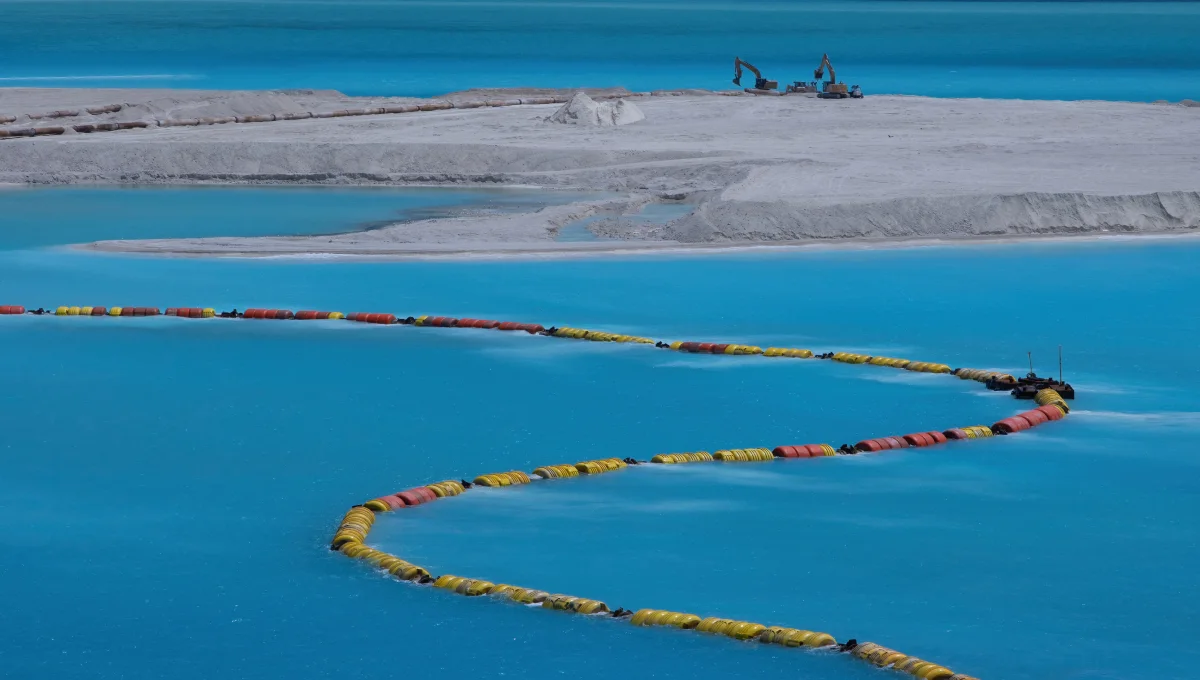
What Are Floating Hoses?
A floating hose is a specialized heavy-duty pipeline engineered for use on water surfaces, serving as a flexible, buoyant conduit for transferring fluids or slurries in marine and dredging environments. Unlike rigid piping systems that rest on the seabed or require complex support structures, marine hoses stay on or just below the water’s surface. This design ensures reliable fluid transfer even in shifting or high-motion conditions commonly found in coastal, offshore, or riverine settings.
Marine hoses are built with multiple reinforced layers to provide strength, flexibility, and durability in demanding applications:
- Inner Rubber Lining: Protects against abrasion and corrosion from sand, slurry, or chemicals.
- Synthetic Cord Reinforcement: Enhances the structural integrity of the hose, allowing it to withstand high internal pressure.
External Floatation Layer or Collars: Keeps the hose buoyant and prevents sagging or submersion.
Several types of marine hoses are used across industries:
- Floating Discharge Hoses: Commonly used in dredging for moving sediment-laden water.
- Suction/Discharge Composite Hoses: Ideal for transferring marine fuel, chemicals, or water.
- Slurry Floating Hoses: Designed to handle abrasive, high-solid slurries in mining or dredging.
To improve stability, many systems incorporate industrial hose floats, which enhance buoyancy and operational safety.
Role of Floating Hoses in Dredging Operations
A floating pipeline plays a critical role in modern dredging operations, serving as the connection between dredgers and discharge pipelines that transport sediment, slurry, or water to designated disposal or processing sites. These hoses are essential for maintaining continuity and efficiency in dynamic marine environments.
Buoyancy and Stability:
By staying afloat, floating hoses prevent entanglement with submerged obstacles and reduce wear caused by contact with the seabed. Their flexibility allows them to follow the movement of waves and vessels, ensuring a secure and uninterrupted flow path.
Preventing Collapse and Kinks:
Unlike rigid pipes that can bend, break, or collapse under pressure or wave-induced stress, a high-quality floating hose maintains its structural integrity even under demanding suction or discharge conditions. This results in fewer operational failures and lower maintenance costs.
Real-World Use Cases:
- Cutter Suction Dredgers (CSDs): Use a floating pipeline to connect the dredge head to shore, allowing greater mobility and easier setup.
- Trailing Suction Hopper Dredgers (TSHDs): Utilize a floating pipeline during sediment offloading, providing a direct and flexible route from ship to shore.
Comparison to Rigid Piping:
Rigid HDPE or steel pipes often require supports and are prone to damage. When supported by industrial hose floats, floating pipeline systems offer a safer, more adaptable, and faster-to-deploy alternative for dredging projects.
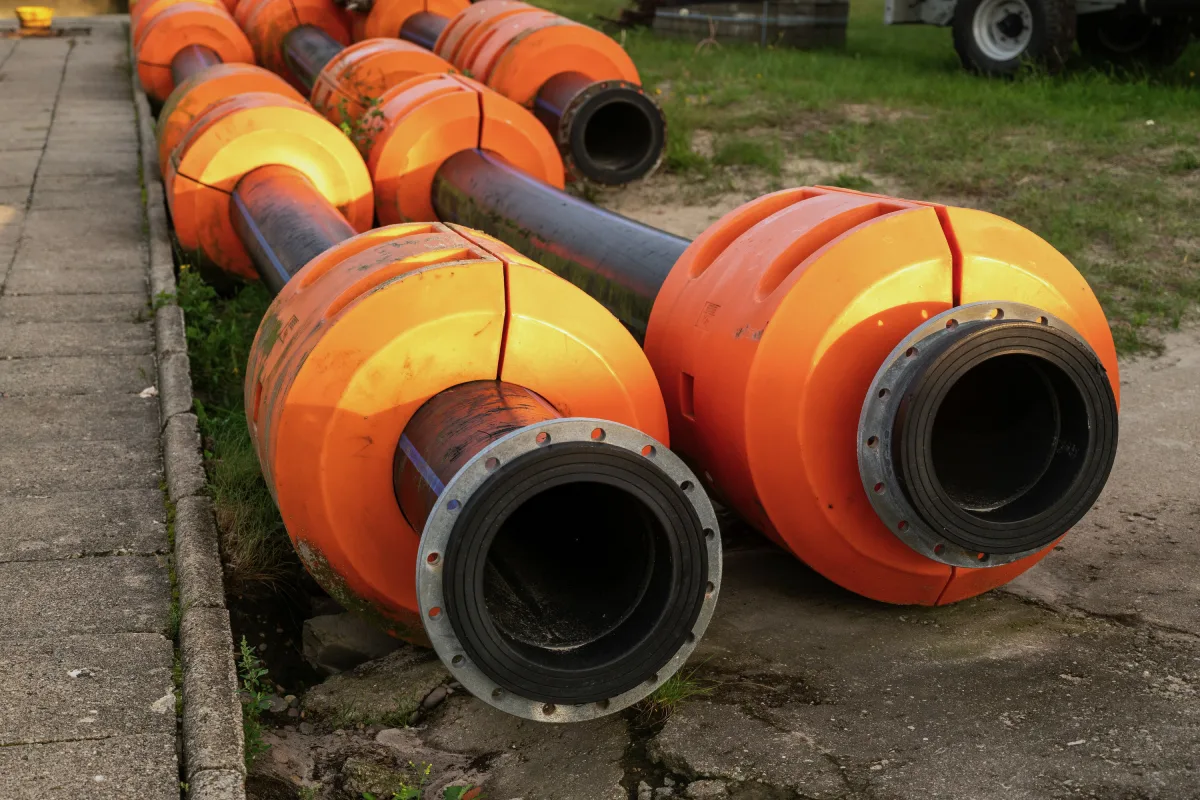
Benefits of Floating Hoses in Marine Fluid Transfer
Utilizing a floating hose system for marine fluid transfer provides significant operational and financial benefits. Designed for performance in challenging aquatic environments, these hoses provide the flexibility and durability necessary for efficient material handling in offshore, nearshore, and dredging applications.
- Enhanced Mobility and Deployment Flexibility:
Floating pipelines are considerably easier to maneuver than rigid pipes. Their lightweight, modular construction allows for quick setup, relocation, or repositioning, making them ideal for operations where dredge lines or fluid transfer points need to be shifted frequently. - Reduced Downtime:
With minimal maintenance requirements and fast deployment, floating pipelines help reduce system downtime. Their rugged design resists abrasion and wear, resulting in a longer service life and consistent performance. - Superior Handling of Heavy Materials:
These hoses can easily transport high-solids slurry, sand, and gravel. Their reinforced lining protects against abrasion, ensuring uninterrupted flow in abrasive environments. - Shock and Vibration Absorption:
Floating pipeline reduces the transfer of mechanical vibrations and shocks from dredging machinery, thereby protecting system components and enhancing operator safety. - Versatile in Depth and Environment:
Supported by industrial hose floats, these systems stay stable across varying depths and water conditions, making them suitable for both shallow inlets and deep-sea operations.
Design Features That Improve Efficiency
The performance and longevity of a floating hose are heavily influenced by its design and construction features. These elements ensure that the hose functions effectively in demanding marine and dredging environments while minimizing maintenance and downtime.
Abrasion-Resistant Inner Layers:
Floating hoses are lined with wear-resistant rubber that can withstand constant exposure to coarse materials, such as sand, gravel, and silt. This internal protection helps prevent premature wear and ensures consistent flow rates.
External Floatation Collars or Integrated Foam:
To maintain buoyancy, floating hoses incorporate either molded floatation collars or integrated foam layers. These distribute the hose’s weight evenly, preventing sagging and keeping the hose above water even under load.
Steel Flanges and Optimized Bend Radius:
Steel-reinforced flanged ends provide secure connections to pumps and pipelines. The hose’s engineered bend radius allows it to flex without kinking, even under movement or pressure.
UV Resistance and Weatherproofing:
Exposure to sunlight and saltwater is inevitable in marine operations. UV-stabilized coatings and corrosion-resistant materials protect the floating pipeline from environmental degradation.
Flexible Joints:
These sections allow the hose to move with waves and current, reducing stress and breakage. When paired with industrial hose floats, these design features ensure stable, safe, and efficient operation in all water conditions.
Applications Across Industries
The versatility of the floating hose makes it a critical asset across various marine and industrial sectors. Designed for durability and flexibility, these hoses go far beyond traditional dredging applications, offering reliable fluid transfer solutions in dynamic environments.
Dredging and Reclamation:
In projects involving sediment removal, land reclamation, or shoreline restoration, floating discharge hoses are vital. They transport dredged materials from the excavation point to designated deposition sites, enabling efficient land development and environmental maintenance.
Offshore Oil and Gas:
Composite floating hoses are widely used to transfer crude oil, refined fuels, and drilling fluids between offshore platforms and transport vessels. Their buoyant design ensures safe, uninterrupted operations in open water, even during rough sea conditions.
Mining Slurry Transport:
In mining, floating pipeline systems move abrasive slurries from floating barges or pumps to shore-based processing plants. Their ability to handle solids-rich fluids and resist wear makes them ideal for this application.
Marine Fuel and Water Transfer:
These hoses provide stable, floating connections during ship-to-ship or ship-to-shore fuel and water transfers, supporting efficient bunkering and resupply operations.
Port and Harbor Maintenance:
Regular dredging to maintain depth and navigability in ports is made easier with hoses supported by industrial hose floats, ensuring smooth, debris-free operations.
Maintenance and Durability Considerations
Maintaining a floating hose properly is essential to ensure long-term performance, safety, and cost-efficiency. Regular upkeep helps prevent unexpected failures and extends the operational lifespan of the hose system.
Routine Inspection:
Scheduled visual checks and pressure tests can identify early signs of wear or damage. These inspections should focus on surface abrasions, flange integrity, and floatation elements.
Signs of Wear:
Common issues include cracking, bulging, or abrasions on the outer layer. Separation of floatation collars or noticeable stiffness may indicate internal delamination. Any visible leaks should be addressed immediately to avoid further damage.
Storage Tips:
When not in use, a floating hose should be thoroughly rinsed, dried, and stored in a cool, shaded area. Avoid sharp bends by properly coiling the hose and suspending it where possible to prevent stress from UV exposure or physical deformation.
Repair vs. Replacement:
Many floating pipelines are modular, allowing for section-by-section replacement and maintenance. Small punctures or abrasions may be patched, but if structural integrity is compromised, full replacement is advised.
Cost-Efficiency:
Supported by industrial hose floats, these systems typically require less infrastructure and offer easy maintenance access, making them more economical over time than rigid pipeline alternatives.
Selecting the Right Floating Hose System
Selecting the appropriate floating hose system is crucial for maximizing efficiency, safety, and longevity in dredging or marine fluid transfer operations. The right configuration ensures smooth performance under varying operational and environmental conditions.
Hose Diameter:
The hose must be correctly sized to match the pump outlet and meet flow rate requirements. Undersized hoses can restrict flow, while oversized ones may be unnecessarily bulky and harder to manage.
Material Compatibility:
The inner lining must be resistant to the specific fluids or slurries being transferred, whether it’s saltwater, fuel, chemical mixtures, or abrasive slurry. Using the wrong material can lead to premature wear or chemical breakdown.
Pressure Rating:
It’s essential to verify that the floating pipeline can handle both standard and surge pressures encountered during operation. This includes suction, discharge, and sudden changes in flow.
Environmental Conditions:
Consider external factors such as UV exposure, high salinity, extreme temperatures, and wave impact. These can all affect a horse’s lifespan and performance.
Vendor Expertise:
Partner with suppliers who provide custom solutions, engineering support, and proven product durability. Systems supported with industrial hose floats further enhance buoyancy and safety.
Custom fabrication options, including length, reinforcement layers, and flange sizes, ensure the hose system is tailored to your specific project needs.

Future Trends in Floating Hose Technology
As the demands of marine infrastructure continue to grow, floating hose technology is advancing rapidly to meet higher expectations in performance, safety, and sustainability. Several key trends are shaping the future of these critical systems.
Smart Hose Integration:
Modern floating hoses are being equipped with embedded sensors that monitor pressure, temperature, and internal wear in real time. This data enables predictive maintenance, reducing unexpected failures and improving overall system reliability.
Lightweight and Sustainable Materials:
Manufacturers are developing new materials such as reinforced polymers and recycled composites. These innovations not only lower the environmental footprint but also make the hoses easier to handle, transport, and deploy.
Modular Assembly Systems:
Future-ready floating pipeline systems are moving toward modular designs with quick-connect couplings and interchangeable components. These features allow for faster setup, easier field repairs, and adaptability to changing job site requirements.
Eco-Friendly Designs:
New hose models prioritize the use of non-toxic, corrosion-resistant, and recyclable materials. These eco-conscious improvements align with global sustainability goals and regulatory standards.
With enhancements such as smart monitoring and integration with industrial hose floats, future floating hose systems will provide more intelligent, responsive, and environmentally responsible solutions for marine fluid transfer and dredging operations.
Conclusion
The floating hose has become an essential component in modern dredging and marine fluid transfer operations, offering a level of adaptability and resilience that traditional piping systems simply cannot match. Designed to perform in challenging aquatic environments, these hoses provide the flexibility and buoyancy required for continuous, efficient material handling, whether it’s transferring slurry, water, fuel, or chemicals across shifting waters.
From reducing downtime and improving operational mobility to enhancing safety and long-term durability, the floating pipeline offers measurable advantages. Industries such as dredging, offshore oil and gas, mining, and port maintenance rely on these systems to maintain smooth operations, even in challenging conditions.
Advancements in design, including wear-resistant linings, UV-protected coatings, and integrated industrial hose floats, have only increased the performance and reliability of these systems. When supported with industrial hose floats, hoses maintain consistent buoyancy, reduce stress on connections, and are easier to deploy and retrieve.
As technology and environmental demands continue to evolve, marine hose systems are poised to offer smarter, more sustainable solutions. Now is the ideal time to assess your current fluid handling setup and determine whether upgrading to a floating hose system can unlock greater efficiency and cost savings for your operations.


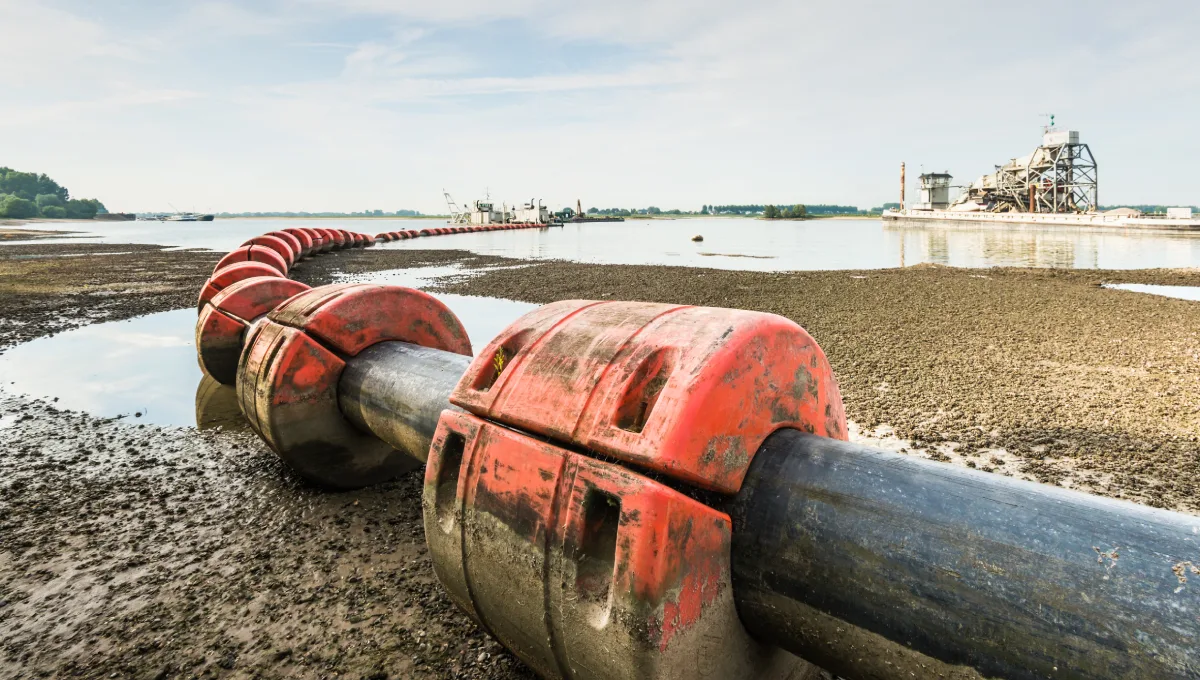
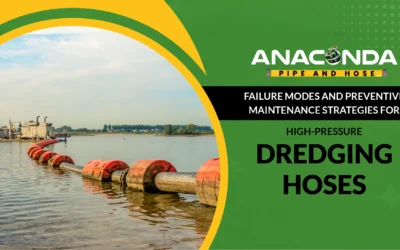
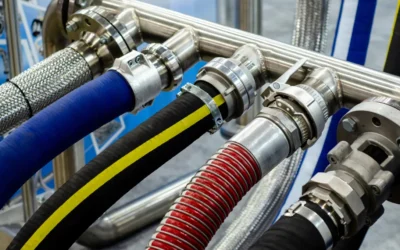

0 Comments